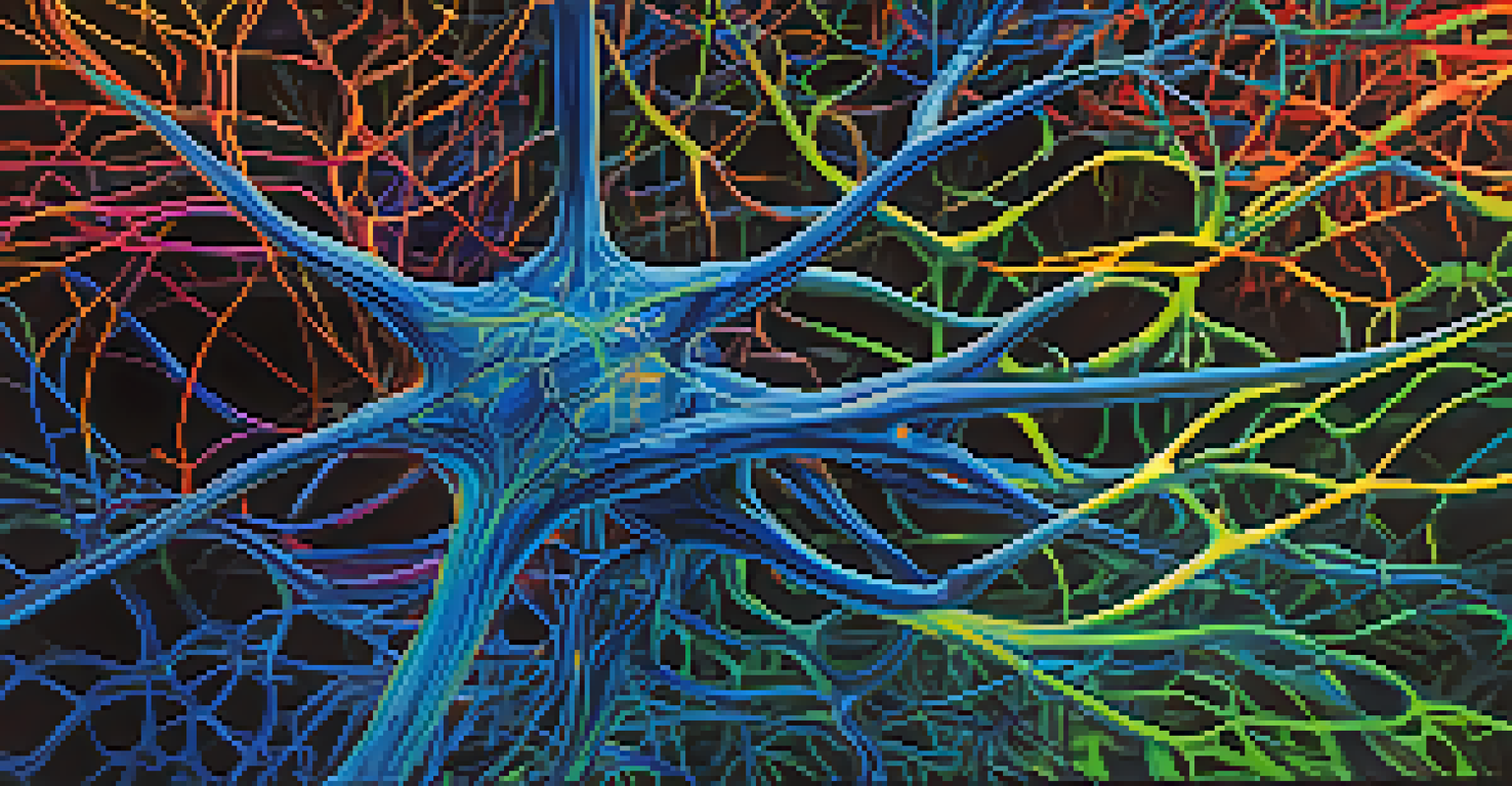The Science Behind Psychedelics: Mechanisms of Action

Introduction to Psychedelics and Their Popularity
Psychedelics have surged in popularity, both in pop culture and scientific research. These substances, like LSD and psilocybin, are known for their profound effects on perception and consciousness. But what makes them so interesting? It's not just their ability to alter reality, but their potential therapeutic benefits that are capturing attention.
Psychedelics may provide a way to heal the mind and spirit, offering insights into the very nature of existence.
As society shifts towards a more open-minded view of mental health treatment, psychedelics are being reevaluated for their role in therapy. Researchers are exploring how these substances can aid in conditions such as depression, anxiety, and PTSD. This renewed interest is paving the way for a deeper understanding of their mechanisms in the brain.
By diving into the science behind psychedelics, we can uncover the intriguing ways these substances interact with our neural pathways. Understanding this can help demystify their effects and highlight their potential advantages in mental health treatment.
How Psychedelics Interact with Neurotransmitters
At the core of psychedelic action is their interaction with neurotransmitters, particularly serotonin. Serotonin is a key player in regulating mood, and psychedelics often mimic its structure, allowing them to bind to serotonin receptors. This binding can lead to altered mood and perception, creating the characteristic psychedelic experience.

When psychedelics bind to these receptors, they can enhance or inhibit the signaling pathways that serotonin influences. This modulation can lead to changes in emotional processing, sensory perception, and even self-awareness. The result? A unique experience that many describe as life-changing or enlightening.
Psychedelics Show Therapeutic Promise
Research indicates that psychedelics like psilocybin and MDMA can significantly alleviate symptoms of mental health disorders such as depression and PTSD.
Understanding how psychedelics interact with neurotransmitters helps scientists develop targeted therapies that can harness these effects, potentially leading to new treatments for mental health disorders.
The Role of the Default Mode Network (DMN)
The Default Mode Network (DMN) is a network of brain regions that is active when we’re at rest and not focused on the external environment. Interestingly, psychedelics have been shown to alter the activity within this network. During a psychedelic experience, the DMN often becomes less active, leading to a dissolve of the ego or self-referential thinking.
The therapeutic potential of psychedelics is unparalleled, providing a new paradigm for treating mental health disorders.
This reduction in DMN activity is thought to contribute to feelings of interconnectedness and unity with the world. Many users report a sense of merging with their surroundings or experiencing profound insights during this time. It’s as if the boundaries that usually define our thoughts and identities begin to blur.
By studying the DMN's response to psychedelics, researchers can better understand how these substances might facilitate therapeutic breakthroughs, particularly in conditions involving rigid thought patterns, like depression or obsessive-compulsive disorder.
Psychedelics and Neuroplasticity: Building New Connections
One of the most exciting aspects of psychedelics is their potential to promote neuroplasticity, which is the brain’s ability to reorganize and form new neural connections. This is particularly vital for recovery from trauma or mental health disorders. By fostering neuroplasticity, psychedelics may help individuals break free from entrenched thought patterns and behaviors.
Studies suggest that psychedelics can increase the production of brain-derived neurotrophic factor (BDNF), a protein involved in the growth and survival of neurons. Higher levels of BDNF can stimulate the formation of new synapses, enhancing cognitive flexibility. This means that after a psychedelic experience, individuals may be more open to new ideas and perspectives.
Neuroplasticity Enhances Recovery
Psychedelics may promote neuroplasticity, helping the brain form new connections that facilitate healing from trauma and entrenched thought patterns.
The ability to create new neural pathways could explain why many people report lasting positive changes in their mindset or emotional well-being after using psychedelics. This potential for lasting transformation is what makes the study of psychedelics so promising.
Therapeutic Applications of Psychedelics in Mental Health
As research continues, the therapeutic applications of psychedelics are becoming clearer. Clinical trials have shown promising results in using substances like psilocybin and MDMA to treat conditions like depression, anxiety, and PTSD. Participants often report significant improvements in their symptoms, suggesting that psychedelics can facilitate deep emotional healing.
The therapeutic setting allows for guided experiences where individuals can confront and process their emotions safely. This can lead to breakthroughs that traditional therapy may not achieve. With trained professionals to provide support, the therapeutic use of psychedelics is a growing area of interest.
These developments underscore the importance of understanding the mechanisms behind psychedelics. As we continue to unlock their potential, we can design better, more effective treatment protocols for those in need.
Safety and Risks: Navigating the Psychedelic Landscape
While the benefits of psychedelics are promising, it’s crucial to navigate the landscape with caution. Not all psychedelic experiences are positive, and some individuals may encounter difficult emotions or situations during their journeys. Understanding the risks involved is essential for anyone considering their use, whether recreationally or therapeutically.
Factors such as dosage, set (mindset), and setting (environment) play significant roles in shaping the psychedelic experience. A supportive and safe environment can enhance the potential benefits, while a negative or chaotic setting can lead to adverse experiences. Thus, preparation and education are key.
Safety and Risks Require Caution
Navigating the use of psychedelics necessitates an understanding of risks and the importance of setting and mindset to ensure safe experiences.
In the context of research and therapy, ensuring safety protocols are in place is vital. Ongoing studies aim to assess both the efficacy and safety of these substances, ensuring that their use is responsible and beneficial.
The Future of Psychedelics in Medicine and Research
Looking ahead, the future of psychedelics in medicine is bright and full of possibilities. As more research highlights their potential benefits, we may see an increase in their acceptance and integration into conventional treatment protocols. This shift could revolutionize how we approach mental health care.
Furthermore, as legislation around psychedelics continues to evolve, access to these treatments may become more widespread. This could open the door for many individuals seeking alternative options for healing and self-discovery. The potential for psychedelics to transform mental health treatment is enormous.

Ultimately, continued research and open conversations will be crucial as we explore the depths of what psychedelics can offer. The journey into understanding these compounds is just beginning, and the possibilities are endless.